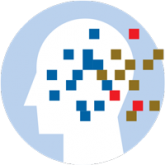Article

I STEP: Recognizing cognitive distortions in posttraumatic stress disorder
- Author:
- Douglas J. Opler, MD
- Eve M. Rosenheck, MD
Evidence-based cognitive-behavioral therapies for posttraumatic stress disorder (PTSD) may employ cognitive restructuring. This psychotherapeutic...
Article

ARISE to supportive psychotherapy
- Author:
- Melissa Neumann, MD
- Nicole Silva, MD
- Douglas J. Opler, MD
Supportive psychotherapy is a common type of therapy that often is used in combination with other modalities.
Article

Delirious after undergoing workup for stroke
- Author:
- Veeraraghavan Iyer, MBBS, MD
- Douglas J. Opler, MD
Ms. L, age 91, is admitted to the hospital for a neurologic evaluation of a recent episode of left-sided weakness that occurred 1 week ago. This...
Article

6 Brief exercises for introducing mindfulness
- Author:
- Douglas J. Opler, MD
- Asha Martin, MD
Evidence suggests mindfulness can be integrated into brief interventions that can be helpful when treating depression, anxiety, and other...
Article

A practical approach to interviewing a somatizing patient
- Author:
- Douglas J. Opler, MD
Somatization is the experience of psychological distress in the form of bodily symptoms. Somatic symptom and related disorders frequently prompt...
Article
8 tests rolled into a mnemonic to detect weakness in suspected conversion disorder
- Author:
- Vineet Punia, MD, MS
- Douglas J. Opler, MD
- Rashi Aggarwal, MD, FACLP, FAPA
